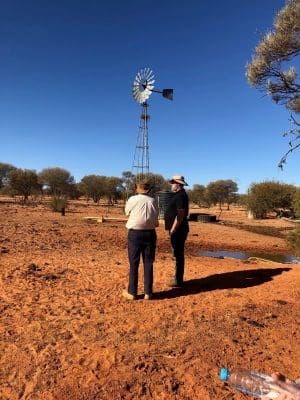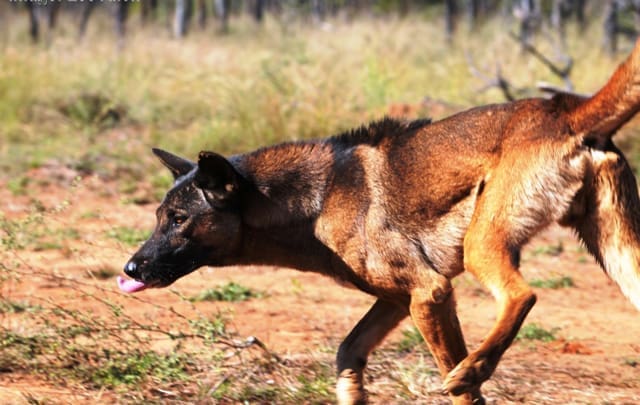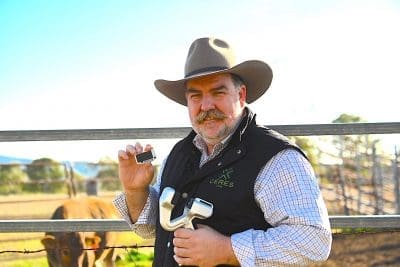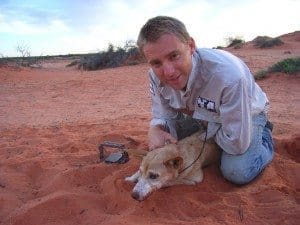A SMART TAG developed to track individual movement and behavioural changes in cattle is also arming researchers with a cost-effective new weapon in the fight against wild dogs.
Ceres Tag has been developing a high-tech tag which builds on previous CSIRO research and provides a range of unique capabilities including GPS tracking of animals connected directly satellites, real time identification, the provision of animal-specific data, such as feeding rate of animals, and the detection of boundary breakouts or theft through movement surveillance.
The units can connect directly to satellites without the need for any additional infrastructure, and use solar panels to draw operating power so no battery changes or maintenance will be required.
The Ceres Tag is due for commercial release to cattle producers in early to mid 2021, but in the meantime they are also being used in a trial to improve understanding of wild dogs, which cause an estimated $89.3 million in lost productivity to the Australian livestock sector every year.
In the station country of Western Australia, wild dog researcher at the Department of Primary Industries and Regional Development, Tracey Kreplins, is overseeing the research project which covers several pastoral stations.
She said the technology is improving the ability of researchers to closely study interactions between wild dogs and cattle movement.
“There is potential to use Ceres Tags on cattle as well as catch wild dogs across the project area, tagging them to satellite track the behaviour of all animals,” she said.
“The ability to track the animals can give us valuable information on the current problems faced by livestock producers when it comes to the impact of invasive species.
“We can check the cattle’s grazing activities and daily movements; unusual movement or activity may mean predation events.”
She said the impacts of wild dogs on the cattle sector was significant, both from a welfare perspective and an economic perspective, through impacts to calving and reduced value of affected stock.
One producer participating in the research is Darren Cousens, owner of Hillview Station situated east of Meekatharra in the Murchison region of WA.
Hillview is one of 52 stations situated in the top corner of the Murchison Regional Vermin Council’s vermin proof fence.
Darren said he is all too familiar with the impact of wild dogs.
 “We’ve destroyed 400 dogs in eight years on Hillview. Last year I had a calf attacked by a dog, resulting in ear and tail damage. Her growth has been stunted because of it. It’s a huge issue for us,” he said.
“We’ve destroyed 400 dogs in eight years on Hillview. Last year I had a calf attacked by a dog, resulting in ear and tail damage. Her growth has been stunted because of it. It’s a huge issue for us,” he said.
Running 600 Santa Gertrudis breeders, which are joined to Droughtmaster bulls, on the 149,000-hectare station, Darren said he was also interested in the capability of Ceres Tag to be able to track cattle to monitor grazing patterns.
“We don’t have a lot of feed here and if I can detect areas of increased grazing pressure, we can move the cattle around,” he says.
“Water use by cattle is another important issue which the tags can help us keep track of.”
Hillview Station has 48 watering points based about five to six kilometres apart. Being able to track increased pressure on one particular watering point can help mitigate possible issues of water shortage.
Use of spatial location technology to locate cattle during mustering and provide operational cost savings was another benefit, he said.
“The ability to track individual animals is so beneficial. While managing grazing pressure and monitoring wild dogs is my priority initially, as we get familiar with Ceres Tag, I think the technology will also be handy during mustering.
“I’m excited to be part of this experiment and I think the potential gains from using Ceres Tags is bigger than we can imagine at the moment.”
‘the opportunity to tag hundreds or thousands of animals’
Queensland based researcher Benjamin Allen, Senior Research Fellow in Wildlife Management at the University of Southern Queensland, said the technology would bring significant advantages to research.
“I first heard of Ceres Tag a couple of years ago and was hoping they’d be available then,” Dr Allen said.
“It was in development stage, so I’ve been waiting in the wings for a few years to get our hands on them. Now we actually have a release date and we’re actively planning our projects to get them out as soon as they’re available.”
He said the tags would allow researchers to collect data on far more animals than ever before, allowing them to ask questions they’ve never been able to ask– something as simple as seeing which animals hang out with each other.
“There’s a lot of intraspecific questions (cow-cow behaviour), and then there’s a lot of interspecific things we can work out, which is two different species interacting with each other.
“You picture a farm in South Africa where they manage wildlife; there might be two dozen different species of animals that you could tag, and you can work out how they’re interacting with each other in real time, for several years. The questions are unlimited for wildlife researchers.”
The economics of high-volume tracking has been cost prohibitive in the past.
“A single GPS or satellite collar would typically cost wildlife researchers about US $3000,” he explains.
“You can quickly add up the cost to collar a decent number of animals, and researchers just don’t get access to that money. We’re usually collaring things in the order of 5 or 10 or 50 animals, and if you’re really lucky and really well-funded, over a few years you might tag 100-200 animals.
“What Ceres Tag can offer us is the opportunity to tag hundreds or thousands of animals. And with that, it also means we can tag them for a long time, not just for a few months.”
With traceability the key to success for researchers and producers alike, plus the relevance to the entire Australian beef industry, Ceres Tag is well placed to take advantage of the Australian Government’s recently announced $13 million competitive grant round aimed to promote the development of breakthrough pest animal and weed control tools.



